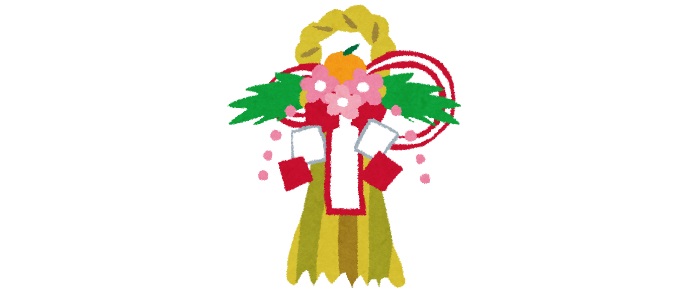Christmas and Oshogatsu.
 2020.12.22
2020.12.22Christmas season is on, here in Japan, with illumination shinning on streets at night, Christmas songs being played at malls, food stores, supermarkets, outlet shopping centers…almost everywhere in public. Radio stations play classic Christmas love songs, TV stations also provide some Christmas concert program at this time of the year. Couples are looking forward their special romantic date on Christmas eve, Families, putting on their Christmas trees and decorations, thinking of what to cook for Christmas Eve’s dinner. Kids, probably are having trouble on deciding what to ask, by writing a letter to dear Santa-san (Santa Clause), for their present. All these sounds quite similar with Christmas tradition of Western countries except for, the holiday is not religious but purely a secular joyful celebration. Therefore, no matter how the atmosphere makes your heart about to jumping out of your chest, it is not a public holiday. Everyone needs to work and wait until finishing job before the Eve. When the evening falls, the celebration begins. Some unique Christmas food tradition is the meal must include chicken and a Christmas cake—-commonly a strawberry shortcake. When the evening finished, people go to bed and the holiday is over except kids, however, are luckier, since they can find presents under the Christmas tree from the mysterious Santa-san the next day morning.
Right after 25th of December, people need to put down the tree, the decoration back in the boxes, switch the mood to Oshogatsu, the New Year season, to come. Oshogatsu, like everywhere else in the world, is the biggest holiday for Japanese, and of course, there is a longer vacation for everyone.
Traditional decorations for the new year include Shimekazari(しめ飾り), to be put at the sides of entranceways, Kadomatsu(門松), to be put at both sides of gates, Kagamimochi(鏡餅), to be displayed at the alcove, to welcome the gods inside the house. Special food for the new year season, typically are Toshikoshi-soba(年越しそば) ——the traditional Japanese buckwheat noodles for the Eve, and Osechi ryouri(おせち料理), to be served on the new year day, which commonly seen being beautifully arranged in the two-layered or three-layered lacquer boxes. Dishes all have meanings, with good wish for the family’s health and prosperity. Zoni(雑煮) is another typical New Year’s special, a dish of soup with rice ccakes, vegetables, etc. although it can be cooked in different style depends on which district you are living in. People also drink Sake that was steeped in toso herbs on the morning of First day of the year with believe in by doing so, diseases can be prevented in the coming new year.
Some interesting events people do during the New Year season including, writing New Year’s Card(年賀状), writing down new year resolutions in Japanese calligraphy(書初め), eating rice porridge with seven grasses(七草がゆ) on January 7, take down the display of Kagamimochi and eat the rice cake inside(鏡開き), by cooked as sweet bean soup on January 11.
Other than these, most people pay a visit to temples or shrines during New Year season, praying for happiness and health for the coming year. It is called Hatsumoude(初詣), first visit to the temples or shrines, praying for health and happiness for the new year. This can be done as early as the dawn of January 1st, if you don’t mind walking in the darkness. However, this year, to avoid crowds and the risk of COVID-19 infection, many people have already started Hatsumoude in December, which is considered to be a rational decision.
Wishing you a happy Christmas and New Year ahead.





